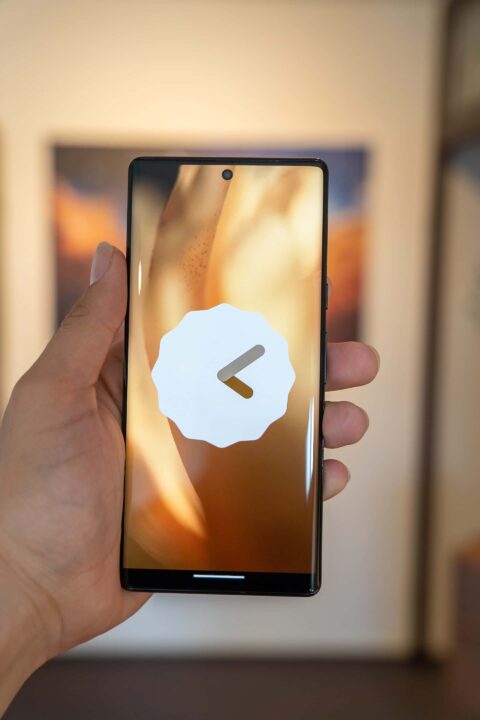Android 13 is the latest version of Google’s operating system for mobile devices. It brings new features, improvements, and security updates to millions of users around the world. If you are an app developer, you might be wondering how to optimise your app for Android 13 and make sure it runs smoothly and efficiently on the new platform. In this blog post, we will share some tips and best practices on how to improve your app performance on Android 13.
Update Your App to Target Android 13
The first step to optimise your app for Android 13 is to update your app to target the new API level 33. This will ensure that your app can take advantage of the latest features and enhancements that Android 13 offers, such as improved notifications, privacy settings, and app compatibility. To update your app to target Android 13, you need to:
Update your build.gradle file to set the compileSdkVersion and targetSdkVersion to 33.
Test your app for any compatibility issues or behaviour changes that might affect your app functionality or user experience.
Fix any errors or warnings that might arise from targeting the new API level.
Publish your updated app to the Google Play Store.
Updating your app to target Android 13 will not only improve your app performance, but also increase your app visibility and discoverability on the Play Store, as users will be more likely to download apps that are compatible with their devices.
Reduce the App Size
One of the easiest ways to improve your app performance is by reducing the size of your application. Users in emerging markets, whether devices are connected to 2G/3G networks or are connected to a pay-by-the-byte plan, frequently avoid downloading applications that are too huge1. Moreover, smaller apps tend to load faster, use less memory, and consume less battery power than larger apps.
To reduce your app size, you can:
Use Android App Bundle instead of APK to deliver your app. App Bundle is a new publishing format that allows you to create a single artefact that contains all the resources and code for your app, but only delivers the ones that are needed for each device configuration. This can reduce your app size by up to 35%2.
Optimise your images and videos by compressing them, resizing them, or using vector graphics instead of bitmap graphics. You can also use WebP format instead of PNG or JPEG for better compression and quality2.
Remove unused code and resources by using tools such as ProGuard or R8. These tools can shrink your code by removing unused classes, methods, fields, and attributes, as well as obfuscating your code to make it harder to reverse engineer2.
Split your app into multiple modules by using Dynamic Feature Modules. This allows you to deliver features on demand, instead of bundling them all in the base app. This way, you can reduce the initial download size of your app and let users choose which features they want to install2.
Optimise Networking
Another important factor that affects your app performance is networking. Networking refers to how your app communicates with the internet to upload or download data. Networking can be costly in terms of bandwidth, battery, and user experience, especially if your app uses cellular data or operates in low connectivity areas.
To optimise networking, you can:
Prioritise text over image-based content as text is easier and faster to load than images or videos2. You can also use placeholders or low-resolution images while loading high-resolution ones in the background.
Use caching and offline mode to store data locally on the device and reduce network requests. You can use libraries such as OkHttp or Retrofit to implement caching strategies for your network calls2. You can also use WorkManager or Firebase JobDispatcher to schedule network tasks when the device is connected to Wi-Fi or charging.
Use Firebase Performance Monitoring or Network Profiler to measure and analyse your network performance. These tools can help you identify network bottlenecks, latency issues, bandwidth consumption, and error rates 2.
Optimise Memory Usage
Memory usage is another critical aspect of app performance. Memory refers to how much RAM your app consumes while running on a device. Memory usage affects how fast your app loads, how smoothly it runs, and how long it stays in the background. If your app uses too much memory, it can cause crashes, freezes, or out-of-memory errors.
To optimise memory usage, you can:
Avoid memory leaks by using tools such as LeakCanary or Memory Profiler. Memory leaks occur when your app holds references to objects that are no longer needed, preventing them from being garbage collected. These tools can help you detect and fix memory leaks in your app2.
Use lazy loading or pagination to load data only when needed, instead of loading everything at once. This can reduce the memory footprint of your app and improve the user experience by showing data faster2.
Use Jetpack Compose to build your UI. Jetpack Compose is a new declarative UI toolkit that simplifies UI development and improves performance. Jetpack Compose uses less memory than traditional XML layouts, as it only creates UI components that are visible on the screen and recycles them when they are not3.
Optimise App Launch Time
App launch time is the time it takes for your app to start and display the first screen to the user. App launch time is one of the most important metrics for app performance, as it affects the user’s first impression and retention of your app. If your app takes too long to launch, users might abandon it or uninstall it.
To optimise app launch time, you can:
Use App Startup library to initialise your app components efficiently. App Startup library allows you to specify which components need to be initialised at app startup and which ones can be deferred until later. This can reduce the app launch time by avoiding unnecessary work or dependencies 2.
Use Splash Screen API to show a branded launch screen while your app loads. Splash Screen API is a new feature in Android 13 that lets you customise the appearance and behaviour of your app’s launch screen. You can use it to show your app icon, logo, or animation, as well as transition smoothly to your main activity4.
Use the Macro Benchmark library to measure and improve your app launch time. Microbenchmark library is a new tool that allows you to benchmark app startup and runtime performance cases, such as scrolling a RecyclerView to measure jank. You can use it to identify and fix performance issues that affect your app launch time2.
Conclusion
Optimising your app for Android 13 is not only beneficial for your users, but also for your business. By following the tips and best practices in this blog post, you can improve your app performance on Android 13 and deliver a fast, smooth, and reliable experience to your users. This can increase your app ratings, downloads, retention, and revenue.
If you need any help with optimising your app for Android 13, feel free to contact us at Recognise Designs. We are a tech services company that provides SEO related services, web and app design and optimization, business intelligence and more. We have a team of experts who can help you with any aspect of your app development and performance.
Sources:
2: Guide to app performance | App quality | Android Developers
3: High-performance apps with Jetpack Compose | Android Developers
4: Splash Screen API | Android Developers
1: How to O
ptimise Android App Performance in 2023?






